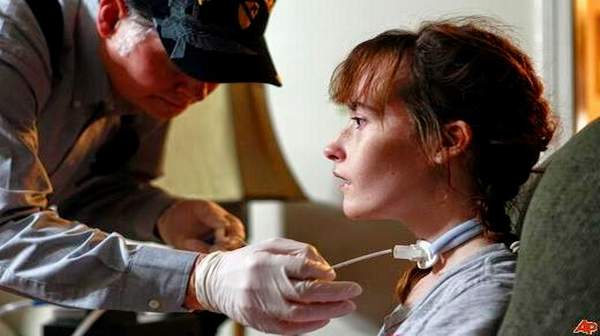A-myo-trophic comes from the Greek language. “A” stands for no or negative. “Myo” refers to muscle, and “Trophic” means nourishment “No nourishment in muscle.” When a muscle has no nourishment, it “atrophies” or wastes away. “Lateral” links the areas in a person’s spinal cordwhere portions of the nerve cells that signal and control the muscles that are located.
As this area degenerates it leads to scarring or hardening (“sclerosis”) in the region.
Motor neurons are nerve cells that located in the brain, brain stem, and spinal cord that serves as controlling units and vital communication links between the nervous system and the voluntary muscles in the body.
Messages from motor neurons in the brain (called upper motor neurons) are transmitted to motor neurons in the spinal cord (called lower motor neurons) and from them to specific muscles.
In ALS, both upper motor neurons and the lower motor neurons degenerate or die, and discontinue sending messages to muscles. Incapable to function, the muscles gradually weaken, waste away (atrophy), and have very fine twitches (called fasciculations).
Eventually, the capability of the brain to start and control voluntary movement is lost.
ALS causes weakness with a wide range of disabilities.
Eventually, all muscles under voluntary control are affected, and individuals loses their strength and the ability to move their arms, legs, and the whole body.
When muscles in the diaphragm and chest wall fail, the ability to breathe will lose without ventilatory support.
Most people with this diesease die from respiratory failure, commonly within 3 to 5 years from the onset of symptoms.
However, about 10 percent of those people with ALS survive for 10 or more years.
Although the disease usually does not damage a person’s mind or intelligence, several recent studies suggest that some persons with ALS may have depression or alterations in cognitive functions involving decision-making and memory.
ALS does not affect the ability to a person’s sense of smell, taste, to see, hear, or recognize touch.
Patients will usually maintain the functions like control of eye muscles and bladder and bowel, although in the late stages of the disease most individuals will need help getting to and from the bathroom.
The Cause
It all lies in the protein-recycling system of the neurons in the spinal cord and brain. In order for those neurons to function well, the protein building blocks in cells must be efficiently recycled.
In ALS, that protein-recycling system is broken and the cells are unable to repair themselves, thereby becoming damaged and leading to a breakdown in communication between the muscular system and the brain, according to the Nature study.
What are the Symptoms?
At the onset of ALS the symptoms may be so slight that they are continually overlooked.
With regard to the appearance of symptoms and the progression of the disease, the course of the illness may include the following:
- muscle weakness in one or more of the following: hands, arms, or legs or the muscles of speech,
- swallowing or breathing
- twitching (fasciculation) and muscle cramping, especially those in the hands and feet
- impairment of the use or loosing strength of the arms and legs
- “thick speech” and being difficult in projecting the voice
- in more advanced stages, shortness of breath, having difficulty in breathing and swallowing
The initial symptoms of ALS can be quite varied in different people.
A person may experience tripping over carpet edges, another person may have trouble in lifting and a third person’s early symptom may be slurred on speech.
The rate at which ALS progresses can be quite variable from one person to another.
Although the mean survival time with this disease is three to five years, many people can live five, ten or more years.
In a small quantity of people, the progression of ALS is known to remit or halt, though there is no scientific understanding as to how and why this happens.
Symptom begins in the muscles of speech, in swallowing or in the hands, arms, feet or legs.
Not all people with this disease experience the same symptoms or the same sequences or patterns of progression.
But, paralysis and progressive muscle weakness are universally experienced.
How is it diagnosed?
ALS is difficult to diagnose because the symptoms are similar to those of other neuromuscular disorders, many of which are curable.
The diagnosis is usually based on a complete neurological examination and clinical tests.
The neurological exam usually shows evidence of muscle weakness (localized or widespread, depending on the range of the disease).
The exam also shows muscle atrophy. The muscles may be so rigid that when the neurologist moves them, they continue to move abnormallythen.
When the neurologist tests the “knee jerk” reaction, the movement became unusually quick.
Because ALS affects the skeletal, voluntary muscles, the neurological test usually does not reveal abnormalities in the sensory reflexes (i.e., vision, hearing, taste, touch, smell, or bladder and bowel control).
What Are the Treatments?
Although no treatment slows or halts the progression of ALS, a variety of drugs and devices are available to help control symptoms and make living with the disease easier.
Patients should look for care from hospitals and/or doctors that provide the best quality care.
In many cases, this care can be acquired through hospitals or doctors that care for large numbers of people with ALS.
With more knowledge, hospitals or doctors may have greater knowledge of the disease and treatment options.





